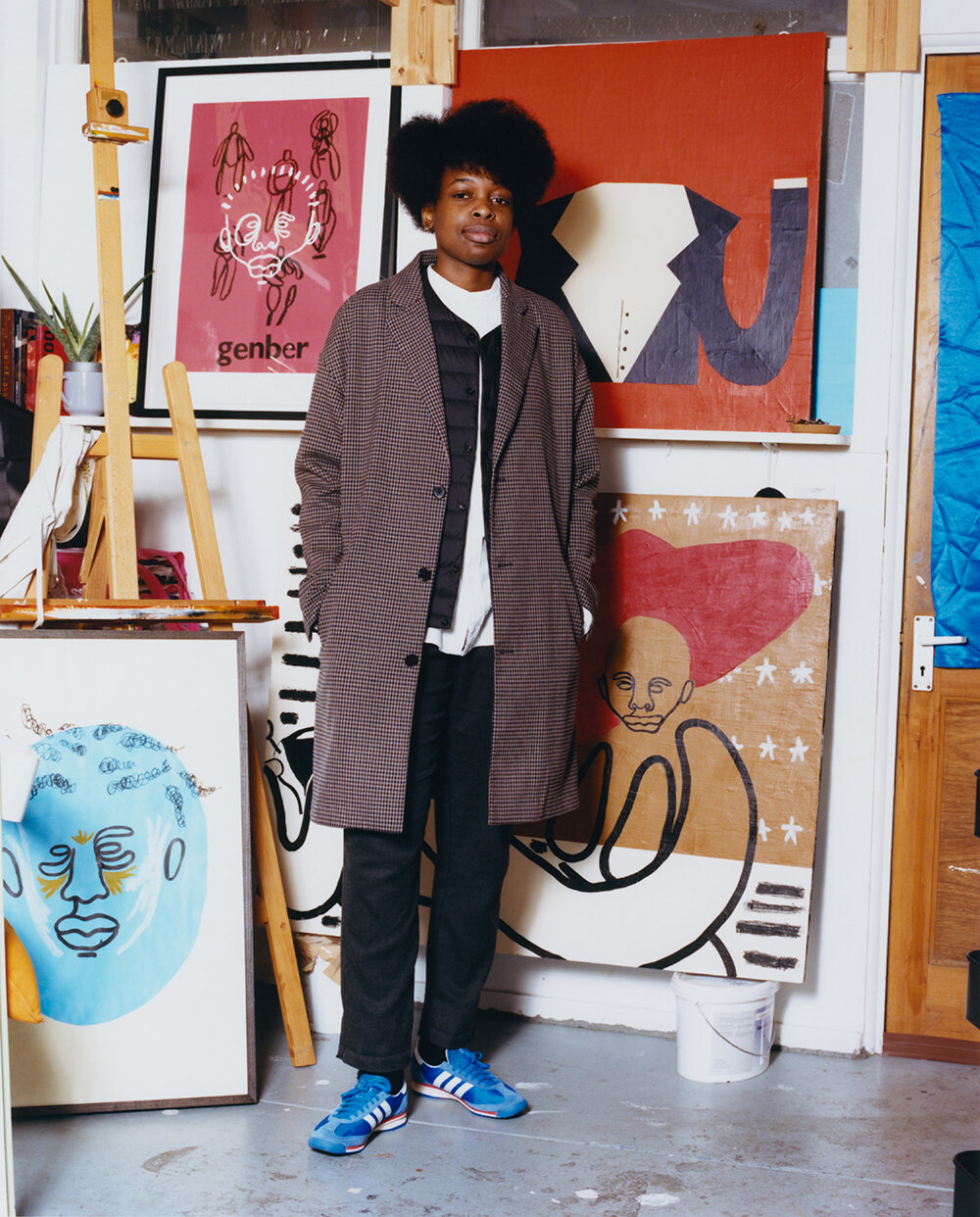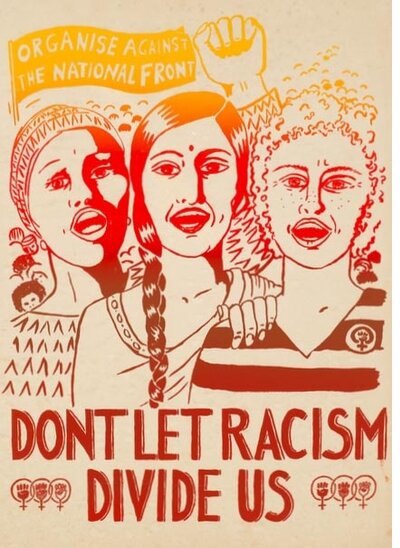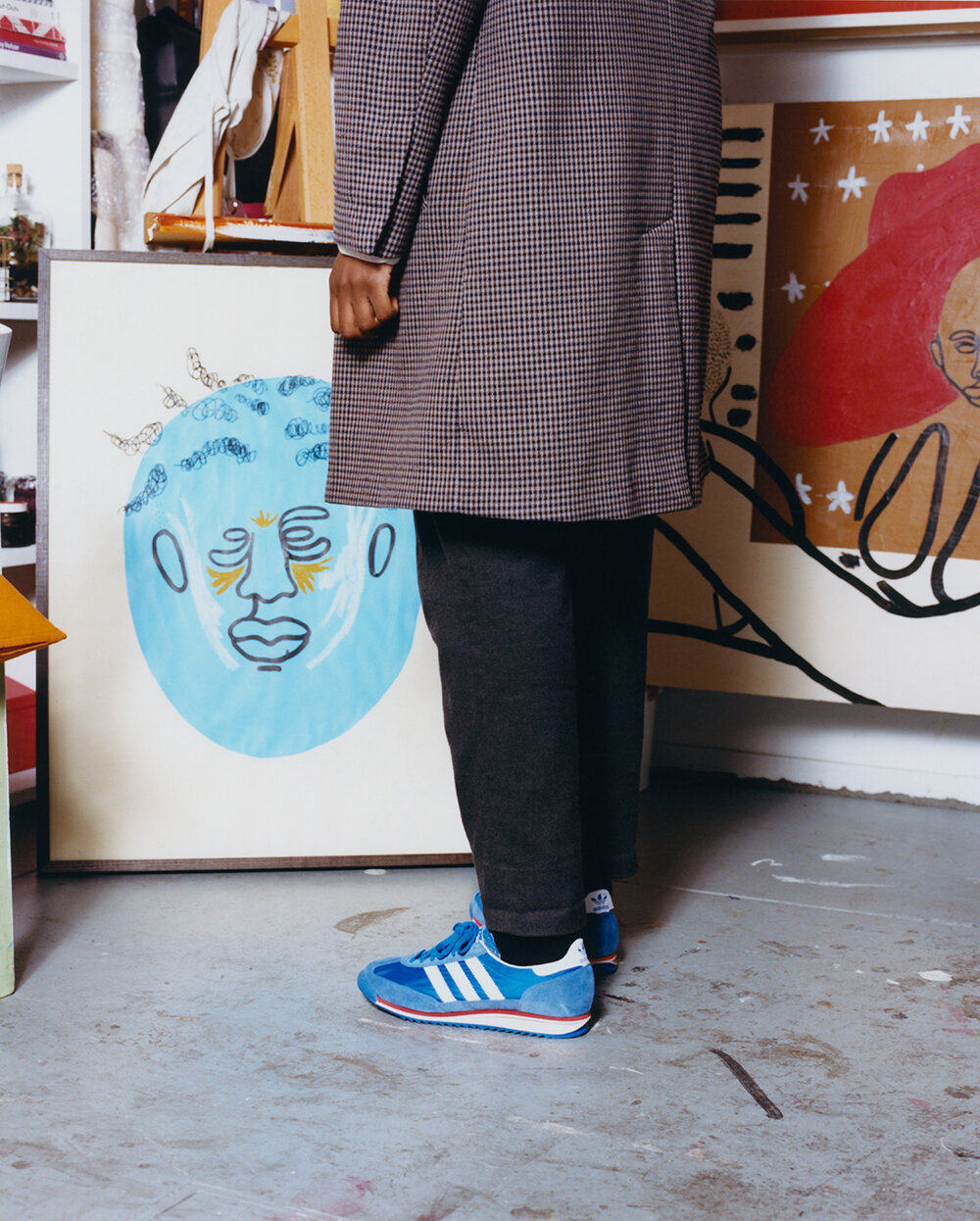Taking Art Out Of The White Cube
Joy Yamusangie photographed in their studio by Sirui Ma.
Joy Yamusangie, artist
In partnership with adidas Originals
Words by Kemi Alemoru
Joy Yamusangie (formerly known as Joy Miessi) has an impressive portfolio. Their work is a mix of illustration, paint, and collage. Each of them bursting with colour, heartfelt messages via scrawling typography, most of it inspired by their dreams or memories of family life while growing up.
As a non-binary artist of colour, their perspective is still an unfortunate rarity meaning that they often feel like a representative in industry spaces. “Some people will choose my work because it checks boxes because of my identity,” they explain over the phone. But to Joy the most culturally significant part of their work is when it fosters a community among those it was supposed to speak to. “For my first exhibition, titled Do You Know Your Middle? it was an exhibition about memories, family and knowing myself. On the final day of the exhibition I programmed live music, people came together, sat down, chilled and had food. Through the conversations on the evening and the feeling in space I knew that messages in the artwork had been received in the way I'd intended.”
Joy’s visceral work continues to create a space for their community to see themselves, and maps out their utopian vision. Here we spoke about how art can be a vehicle for social change.
How would you say your work illustrates your cultural beliefs?
My work is a reflection of me and my beliefs, I discuss political and social issues close to home as it often has an impact on my lived experiences. However, whilst my identity influences my work, it isn’t always the core focus of every painting or drawing I make.
How can art play a key role in social change in the coming years?
The ‘art world’ is so vast with so many different pockets that it’s hard to quantify what a broad response may be. Personally, the artist communities that I’m closest to work hard to create art on their own terms and with integrity.
I think of one of my favourite artists, Emory Douglas and his iconic artwork and posters for the Black Panthers. Art can be a highly effective way of communicating a message in a different way to words and the accessibility of social media today allows artists to broaden this reach.
We can't talk about activism or the push for equality without mentioning the election. You're one of many British artists that has contributed to Creativity4Change. Why did you want to get involved?
This project was created by artists Polly Nor and Ione Gamble. I wanted to get involved as I felt like there was more that I could do to encourage people to register to vote and understand the impact of the upcoming general election. I wanted to use my platform and art for change. I created an illustration out of card, with text that reads, “Save Our NHS” and a self portrait in the foreground.
Who in the art world has inspired cultural change in the past and who is doing that now?
Keith Haring and his activist posters raising awareness on AIDS definitely comes to mind. The recent exhibition at Tate Liverpool of his work was amazing. Also, illustrators such as Polly Nor, Erin Aniker and Ashton Attz who have been creating artwork highlighting social issues and using their platforms for change. Travis Alabanza too.
I saw the See Red Women's Workshop book on your shelf. They were really active throughout the 1970s, organising around the women's liberation movement and creating screen-printed protest posters. How has their work influenced you?
Independent posters and flyers have always been a source of inspiration for me, coming across the See Red Women’s Workshop book I was drawn to the colours and their straight-to-the-point policy messages. I found myself interested in the process of print, it inspired me to incorporate print practices into my work and they have been a huge influence on my work.
Selection of See Red Women’s Workshop screen-prints
How do you feel fashion, art, and activism can collide? When adidas first released the SL shoe it was adopted by those pushing for cultural change—can you communicate those same messages through clothing?
Clothes are often a way of communicating our personalities and interests. I started working on clothing as an alternative to canvas. By creating works on clothing that is worn it brings art out of the white cube. So many people don’t visit art galleries so it's a nice way of bringing your message into a public space, you don't have to pay to see it. When I’ve worn some of my pieces out on public transport it caused quite a bit of conversation which is really interesting.
If you were to create a piece that imagined your future utopia - what would that look like?
My last series of work, Blue Glass Fortunes, was that. It was a series where most pieces visualised a utopia of my dreams, where I existed without barriers. My paintings showed ballrooms, dinner tables and just everyday life.
Blue Glass Fortunes, Joy Yamusangie
Read the rest of the interviews in our Creating Change series in partnership with adidas Originals.









